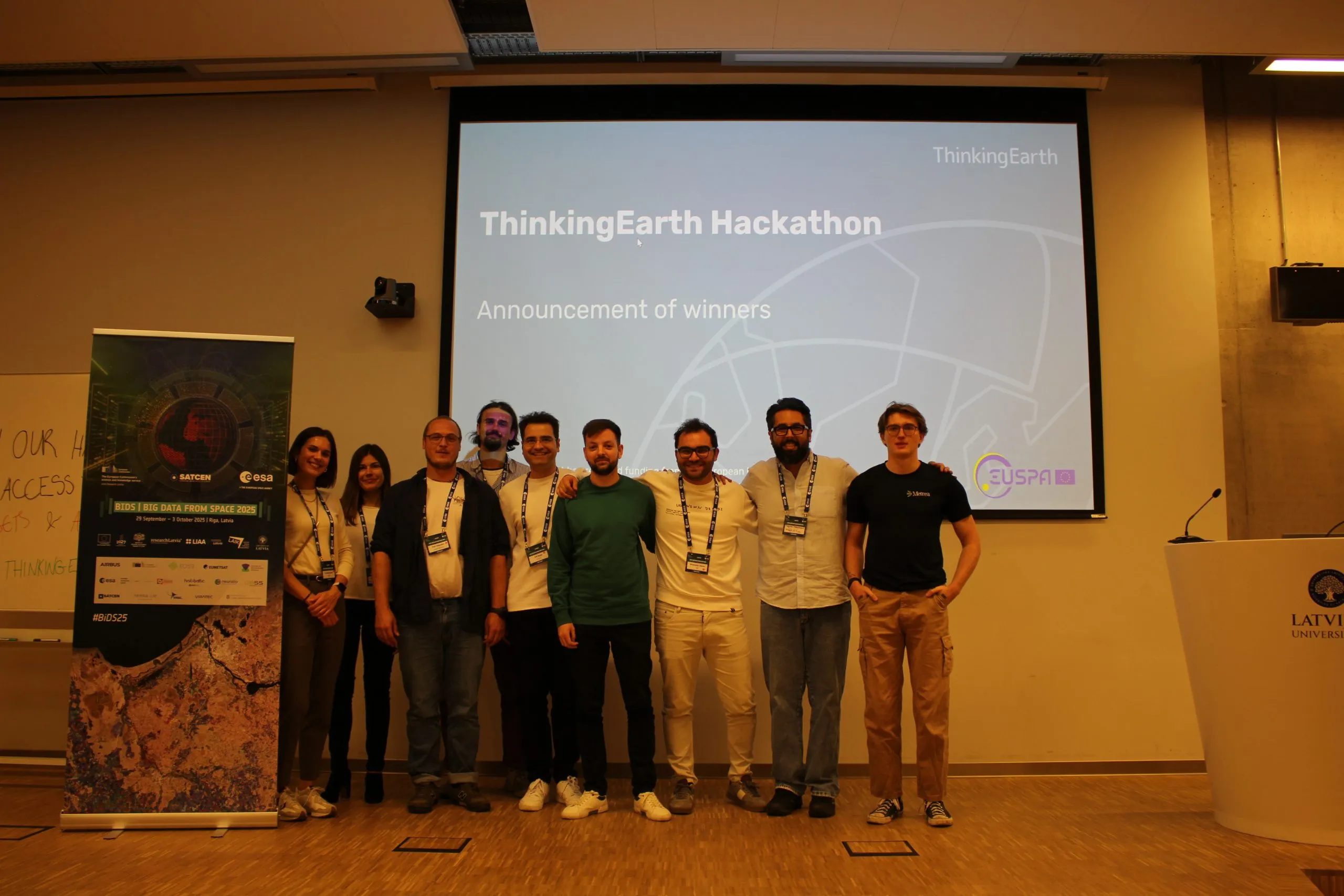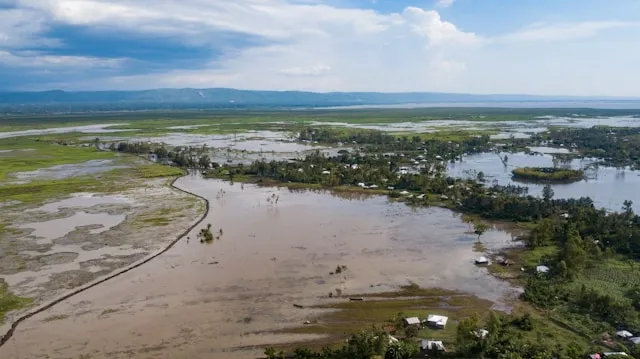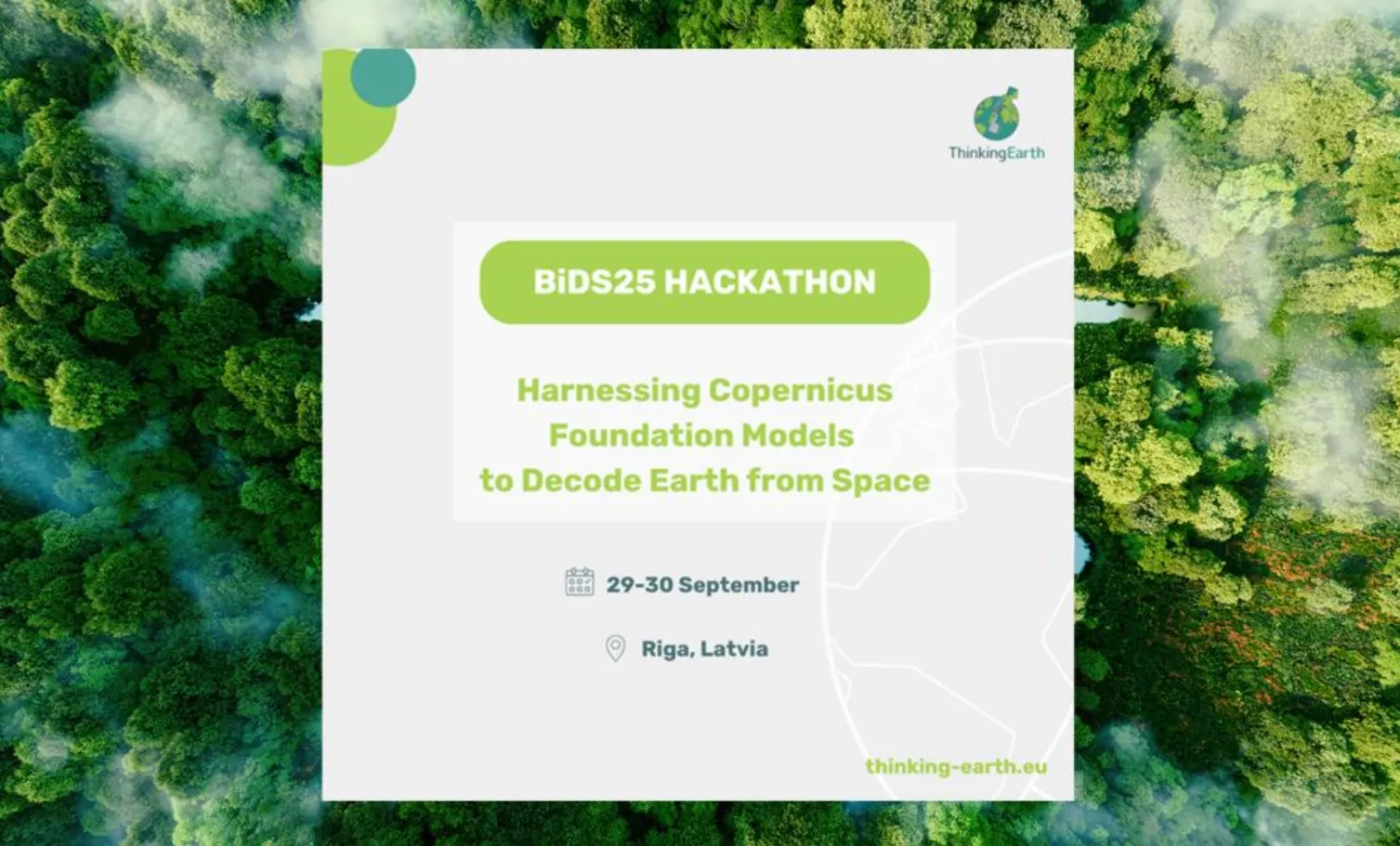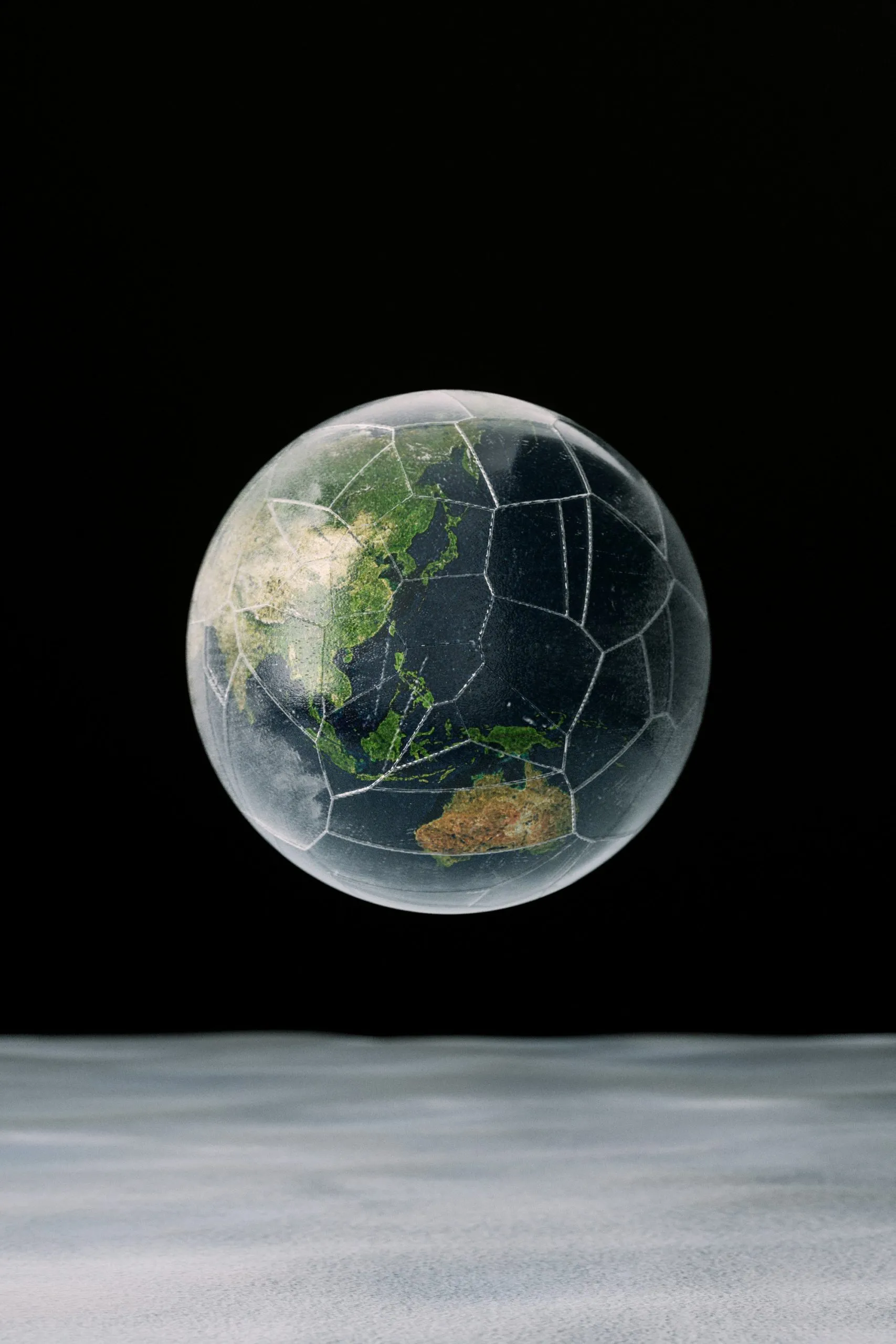The ThinkingEarth Hackathon at BiDS 2025: showcasing AI innovation for Earth Observation

Organised by ThinkingEarth, the hackathon challenged participants to design innovative solutions using cutting-edge AI tools — from large EO foundation models to AI-based weather forecasting and vision-language models (VLMs) that link satellite imagery with natural language.
Over three weeks of remote development and a final onsite sprint in Riga, participants developed, tested, and refined prototypes aimed at unlocking new ways to analyse and interpret EO data.
Three Tracks, One Goal: Advancing AI for the Planet
Participants chose one of three open-ended tracks, each designed to push the boundaries of AI for environmental and geospatial research:
- Track 1: EO Foundation Models
Teams explored the use of large-scale EO models such as CopernicusFM and DOFA, experimenting with fine-tuning strategies and adaptation across geographies or modalities. Applications included land cover classification, biomass estimation, and other core Copernicus tasks. - Track 2: Weather Forecasting Models
This track focused on evaluating and extending AI-driven weather forecasting systems. Participants designed new evaluation frameworks and applied models to challenges such as cyclone tracking and extreme weather event prediction. - Track 3: EO Vision-Language Models (VLMs)
Here, participants combined imagery and text to enhance the interpretability of EO data. Projects included image captioning, visual question answering, and text-based image retrieval, leveraging pre-trained VLMs and starter notebooks provided by the organisers.
Each team received access to a curated GitHub repository featuring open EO datasets, pre-trained models, and example notebooks. A kick-off webinar, held on 3 September 2025, guided participants through the technical setup and participation process.
Innovation and Collaboration in Action
The hackathon attracted participants from across Europe and beyond — students, researchers, and independent developers with expertise in deep learning, data science, and AI for Earth systems. No prior experience in Earth Observation was required, enabling a diverse mix of disciplines and perspectives to converge on shared challenges.
During the remote phase, teams refined their ideas and codebases, collaborating virtually and receiving mentoring support from ThinkingEarth experts. The onsite sprint at BiDS 2025 in Riga provided a high-energy environment for final testing, pitching, and presentation to a panel of judges representing research institutions, industry, and the European space community.
Celebrating the Winners
After an impressive showcase of creativity and technical excellence, four teams were recognised for their outstanding contributions:
- 1st Place (€2,500): Foundation Models for Water Surface Mapping – Farshad Farahnakian
This project demonstrated how EO foundation models can be fine-tuned to detect and monitor water bodies at scale, offering valuable insights for hydrology and flood management applications. - 2nd Place (€1,500): Disaster-GeoRAG – Udit Asopa and Athanasios Trantas
The team developed a Retrieval-Augmented Generation (RAG)-based system to integrate geospatial data and AI models for rapid disaster response and situational awareness. - 3rd Place (€1,000): Deforestation Embedder – Paul H. and Luis Maecker
Their model leveraged embeddings from EO foundation models to identify and classify deforestation patterns, supporting sustainable forest management. - Special Mention (4th): Wildfire Predictions with EO Foundation Models – Louis Aberdeen
This project applied Copernicus-scale EO data to train predictive models for wildfire risk, highlighting the potential of foundation models in environmental monitoring.
See all the information under our spotlight applications page!
These winning solutions showcased how combining AI and EO can generate tangible, high-impact outcomes — from climate resilience to resource monitoring.
Empowering the Next Generation of EO Innovators
Beyond the competition, the ThinkingEarth Hackathon fostered collaboration, learning, and experimentation. Participants gained hands-on experience with some of the world’s most advanced Earth AI models and contributed to a growing ecosystem of open, reproducible science.
The event also demonstrated how foundation models — similar in scale to those transforming language and vision AI — are now enabling breakthroughs in Earth system understanding, bridging disciplines and advancing Europe’s leadership in geospatial intelligence.
Share
Read next

Consistent Flood Mapping and Forecasting with ThinkingEarth

ThinkingEarth Hackathon: Shaping the Future of AI for Earth

DOFA and ThinkingEarth: Towards Adaptive and Scalable Earth Observation Models


